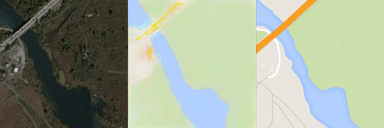dfouhey / Caffe64
Programming Languages
Labels
Projects that are alternatives of or similar to Caffe64
Welcome to Caffe64!
We got sick and tired of complicated dependency wrangling and code bloat, and set out to make the simplest and smallest, yet remarkably functional, neural network library.
We are finally at our April 1 Release (v4.1.2018).
Requirements
Try our simple 3-item checklist to see if you're ready to upgrade to Caffe64.
- Are you using 64 bit linux (sorry -- for OSX you need to change the system calls)
on an Intel or AMD processor made after 2006?
(Try
grep sse3 /proc/cpuinfo) - Does your system have
/dev/urandom? - Do you have 12KB or more disk space?
If so, you're set!
Why make a new library?
Installing a new neural network library is typically a tremendous pain because of onerous dependencies, python version hell, complicated Makefiles, and massive code bloat. We've decided to ditch all of this and release a library that we think is the easiest to compile and most lightweight neural network library, period.
We've took a radical look at the dependencies and found that every single
piece of external code, from python to MKL to even the C standard library can
be safely ditched. All you need is a system that responds to the x86_64 syscall ABI and a
processor that supports SSE (up to SSE3 which is like ~10 years old).
If your system doesn't provide /dev/urandom, you'll also need a workaround (see FAQ). But
other than that, there literally no dependencies!
Getting Started
If you've used caffe before, you'll feel right at home. Let's make caffe64!
make
gcc -o caffe64 caffe64.s -nostdlib
strip caffe64
Wasn't that easy and fast!? On my machine it takes ~11ms. It's so fast that you could even run this in the inner loop of an RL algorithm!
wc -c caffe64
11368 caffe64
That's tiny (especially since it's a static executable)!
Training with Caffe64
But does it work? Let's train a fully connected network to solve mnist! First, download MNIST.
make data
cd mnist && python dl.py
--2018-03-12 12:51:30-- http://yann.lecun.com/exdb/mnist//train-images-idx3-ubyte.gz
Resolving yann.lecun.com (yann.lecun.com)... 216.165.22.6
Connecting to yann.lecun.com (yann.lecun.com)|216.165.22.6|:80... connected.
Now train a classification network to solve the task.
make clsTrain
./caffe64 train mnist/network5.txt netWeights/weights.bin mnist/optimsetting.txt 60000 mnist/mnistX.txt mnist/mnistYn.txt
______ ____ ____ _____ __ __
/ ____/____ _ / __// __/___ / ___/ / // /
/ / / __ `// /_ / /_ / _ \ / __ \ / // /_
/ /___ / /_/ // __// __// __/ / /_/ //__ __/
\____/ \__,_//_/ /_/ \___/ \____/ /_/
Parsing net...
Loading X...
Loading Y...
[Training] Epoch 01 / 15 MBIter 020 / 600 LR 0.001000 Loss 1.983744
[Training] Epoch 01 / 15 MBIter 040 / 600 LR 0.001000 Loss 1.351138
[Training] Epoch 01 / 15 MBIter 060 / 600 LR 0.001000 Loss 0.759121
[Training] Epoch 01 / 15 MBIter 080 / 600 LR 0.001000 Loss 0.607508
[Training] Epoch 01 / 15 MBIter 100 / 600 LR 0.001000 Loss 0.489394
[Training] Epoch 01 / 15 MBIter 120 / 600 LR 0.001000 Loss 0.468066
[Training] Epoch 01 / 15 MBIter 140 / 600 LR 0.001000 Loss 0.400611
...
Finished normally in 144s
If you've ever used caffe before you can probably guess at what each of these files does. But let's look at them to see.
cat mnist/network5.txt
5
inp 784 100
lin 100 -2
rel
lin 10 -2
sce
This defines a 5 layer network that takes a 784 dimensional input in minibatches of 100. It then runs it through a 100-channel linear layer that's initialized with gaussian ~ N(0,10^-2). That's passed through a relu, and then to a linear layer that outputs 10 channels, also initialized to ~N(0,10^-2). This is then passed through a softmax-cross-entropy layer that defines a loss.
cat mnist/optimsetting.txt
0.001
5
0.1
0.00001
0.9
15
These are just the parameters the optimizer uses to fit the net to data.
- Base learning rate
- LR epoch step count
- LR drop factor
- Weight decay multiplier
- Momentum gamma
- Num epochs to run
The remaining inputs are ordinary data text files for the inputs (trainX.txt) and outputs (trainY.txt) and caffe64 dumps the weights to an easy to load binary format.
Let's try it on test data!
make clsTest
./caffe64 test mnist/network5.txt netWeights/weights.bin 10000 mnist/mnistXe.txt mnist/p.txt
______ ____ ____ _____ __ __
/ ____/____ _ / __// __/___ / ___/ / // /
/ / / __ `// /_ / /_ / _ \ / __ \ / // /_
/ /___ / /_/ // __// __// __/ / /_/ //__ __/
\____/ \__,_//_/ /_/ \___/ \____/ /_/
Parsing net...
Loading net...
Loading X...
[Testing] Epoch 1 / 1 MBIter 020 / 100
[Testing] Epoch 1 / 1 MBIter 040 / 100
[Testing] Epoch 1 / 1 MBIter 060 / 100
[Testing] Epoch 1 / 1 MBIter 080 / 100
[Testing] Epoch 1 / 1 MBIter 100 / 100
Finished normally in 2s
Now the test posteriors have been written to mnist/p.txt!
You can find a regression network in mnist/networkReg.txt and other
networks in the examples facades, rank, and image_reco.
Currently, caffe64 supports:
- An input layer (
inp, which must be first and which must specify the feature size and minibatch size) - Linear layers (
lin, which must specify the number of channels and initialization) - Relu layers (
rel) - Tanh layers (
tnh) - Softmax layers (
smx) - Softmax cross-entropy loss layers (
sce), which can cap a network and do both softmax and cross-entropy - L2 loss layers (
l2l), which can cap a network.
Writing new layers
Writing new layers in Caffe64 is easy. You need to:
- Add a new layer id and layer name
- Write initialization, forward, and backward functions
- Add the id, name, and functions to the call table
Layers themselves are easy to code -- here is the relu forward pass, which uses a convenience macro to look up the previous layer in the network and some constants for the offsets within the layer.
reluForward:
/* given a relu layer pointed to in rdi, do the forward pass */
push rbx
mov rbx, rdi
prevLayerToRAXtRCX
mov rsi, [rax+LAYER_OFF_DAT]
mov rdi, [rbx+LAYER_OFF_DAT]
mov rcx, [rbx+LAYER_OFF_N]
imul rcx, [rbx+LAYER_OFF_K]
pxor xmm1, xmm1
1: movss xmm0, [rsi]
maxss xmm0, xmm1
movss [rdi], xmm0
add rsi, 4
add rdi, 4
sub rcx, 1
jnz 1b
pop rbx
ret
But I don't want to program in assembly!
It's easy to use caffe64 even if your assembly skills are rusty. We provide
examples of calling caffe64 from python ( image_reco, bridges, char ) and
from MATLAB ( facades , rank ) using the timeless interface of writing to text
files, calling an executable, and reading from text files.
Image reconstruction
Here, you can use caffe64 to do a questionable image compression scheme where you
map (x,y) in the image to (r,g,b). Take a look at image_reco.py to get started.
Credit goes to Andrej Karpathy for doing this with
convnet.js. We provide two networks that yield slightly different styles.
See image_reco/image_reco.py.
Facade prediction
Here, we use caffe64 to do the hard work and MATLAB to do im2col. Run dl.sh to
get the CMP facade database and then facades/pix2pix64.m to learn mappings from images to labels
and back.
Rank Estimation
Here, we do the classic WTF-is-your-problem task of predicting the rank of a matrix.
See rank/doRank.m, which generates matrix rank data and then trains a network and
then evaluates it.
Bridges of Allegheny County
Here, we do a standard problem from the UCI repository and fit a logistic
regression model to predict properties of bridges in Pittsburgh from various
attributes. See bridges/bridges.py
Character markov model
See char for a basic markov model over characters. Running it on caffe64.s
lets us sample stuff like this (a particularly nice sample cherry picked).
mov rdi, r13
mov r12, [rbp-8]
mov edx, 1
mov rax, [rbx+layer_off_n]
mov rdi, [rbx+layer_off_n]
mov rsi, [currentn]
mov rdx, [rbx+layer_off_k], r15
mov r15, rsi
mov rdi, [rdi+8*rax]
mov edx, 1
syscall
mov rax, [rdi+4*rax]
call rax
mov rdi, r14
We can also sample paper ideas by learning a model on the CMU paper title database.
- interaction and bayesian graph for continuous data based on submodular factorization of perspective: a study for analysis
- learning from metametric and recurrent model automated optimization
- social low-rank representations
- matrix sets and learning as stochastic segmentation
FAQ
Q. Is it hardcoded?
A. No, run the demos. We do six tasks with a variety of networks: 1, 2, 3, 4, 5, 6, 7, 8.
Q. What's the input format?
A. Caffe64 expects files to be written in ordinary, not scientific-notation, float or int format (i.e., "%f" not "%e").
Q. It seems that it only does 1D feature vectors?
A. Convolution and other inductive biases are only necessary when you have small data.
Q. Did you use a compiler or something?
A. No, compilers are for losers. You can see that this is 100% natural assembly due to: register usage (e.g., layer ops always use rbx as the pointer to the layer, copying-like-code uses rsi and rdi), the use of a lot of string instructions (repne scasb for searches, rep stosd for filling memory), and shady things like stuffing a float from an xmm register into a callee-save register.
Q. Is it faster?
A. It's probably faster than a naive implementation in C, but most of the computation is probably spent in matrix multiplies, and I don't expect to be able to beat ATLAS at writing gemm.
Q. I don't have /dev/urandom, but I do have a recent processor. What's the workaround?
A. Sure. Try grep rdrand /proc/cpuinfo. If you find it, replace randbytes with:
randbytes:
rdrand rax
jnc randbytes
ret
Q. What are the calling conventions?
A. It's the basically the usual System V AMD64 ABI:
(1) arguments go in rdi, rsi, rdx, rcx, r8, r9 for ints
and the low scalar part of xmm0, ..., xmm8 for floats, and
(2) callee saves are rbx, rbp, and r12, ..., r15. The exceptions
are that (1) some i/o procedures (e.g., printInt) save rdi
as a convenience for repeated calls and (2) we ignore all stack alignment stuff.
Contributor List
- David Fouhey wrote caffe64 and the demos.
- Daniel Maturana made MNIST download way better and contributed a large dataset of paper titles that appear in the
chardemo.







